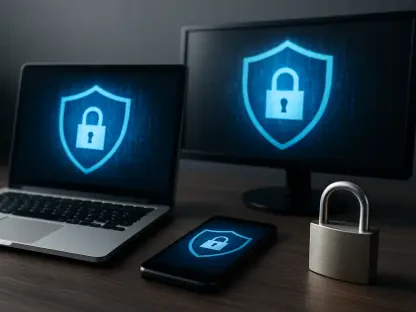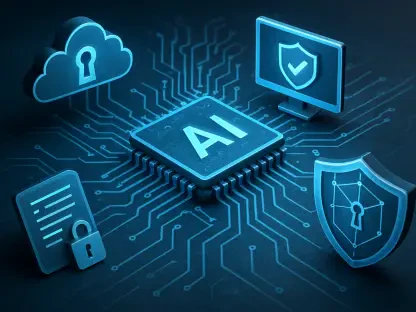In the ever-evolving landscape of cybersecurity, understanding how to effectively train employees to become active defenders of their organizations is more critical than ever. Today, we’re thrilled to sit down with Rupert Marais, our in-house security specialist with deep expertise in endpoint and device security, cybersecurity strategies, and network management. With years of experience under his belt, Rupert has seen firsthand how tailored training can transform high-risk employees into invaluable assets for organizational security. In this interview, we’ll dive into the nuances of personalized security training, the importance of expanding beyond basic topics, the role of technical guardrails, and how employees can become proactive protectors of their digital environments.
How do you see the limitations of generic, one-size-fits-all security training for employees across different roles?
Generic training often fails because it overlooks the unique risks tied to specific job functions. A developer, for instance, might inadvertently introduce vulnerabilities through code or system configurations, while a finance professional could be targeted with sophisticated email scams involving sensitive data. If you ignore these differences, you’re leaving gaps in your defense—employees won’t know how to handle the threats most relevant to them, and the organization’s overall security suffers. It’s like giving everyone the same tool without considering the job they’re doing; it just doesn’t fit.
What does the concept of “protective stewards” mean to you in the realm of cybersecurity?
To me, protective stewards are employees who go beyond just avoiding mistakes—they actively contribute to the organization’s security. They’re the ones spotting and reporting suspicious activity, whether it’s a weird email or an odd system behavior. By fostering a mindset of shared responsibility, they help build a stronger defense. The benefit is huge: you’ve got a workforce that’s not just a potential liability but a first line of defense, catching issues before they escalate.
Why is tailoring security training to individual roles so crucial, especially for those in high-risk positions?
High-risk roles, like executives or IT staff, have access to critical systems or data, making them prime targets. Tailored training ensures they’re equipped to handle the specific threats they face. For example, a finance employee might need deep dives into spotting email fraud, while a developer should learn secure coding practices. Without this customization, you’re either overwhelming people with irrelevant info or leaving them unprepared for real dangers. It’s about relevance—training sticks when it feels directly applicable to their daily tasks.
How can organizations personalize training without crossing into privacy concerns or making things too complex?
Personalization should focus on role-based needs rather than deep personal profiling. Stick to job functions and general learning preferences instead of invasive data collection, which can erode trust and even violate privacy laws. Over-complicating things with endless customization can also backfire—keep it manageable by focusing on core risks per role. The key is striking a balance: make it specific enough to be useful but simple enough to scale across the organization without becoming a burden.
What are some effective ways to deliver security training that resonate with different learning styles?
Not everyone learns the same way—some prefer videos for visual impact, others like written guides for reference, and some thrive in interactive simulations. Organizations can assess preferences through feedback or quick surveys to see what sticks. I’ve noticed security teams can borrow from marketers here: test different formats, track engagement, and adapt. It’s about meeting people where they are—if the delivery doesn’t click, the message won’t either.
Why do you think security training needs to go beyond just phishing and basic authentication practices?
Phishing and multifactor authentication are important, but they’re just the tip of the iceberg. Employees often engage in risky behaviors without realizing it—like an executive connecting to an untrusted network while traveling or an IT staffer misconfiguring cloud storage. Training needs to address these broader issues because they’re often tied to specific roles and can have massive impacts. If you’re only covering the basics, you’re missing half the battle.
How does focusing on a wider range of employee behaviors strengthen an organization’s security posture?
When you address diverse behaviors—like how finance handles regulated data or how IT manages system access—you’re plugging more holes. For instance, training IT on secure cloud setups or finance on data handling protocols directly reduces vulnerabilities in those areas. Tools like open-source behavior databases can help by mapping out these risks and linking them to real-world threats, giving organizations a clearer picture of what to prioritize. It’s about building a comprehensive shield, not just a single barrier.
Can you explain the importance of technical guardrails alongside security training?
Training builds awareness, but technical guardrails ensure secure behavior by design. Think of systems with least privilege access or safe defaults—these make it harder to mess up. They’re especially vital for slips, those accidental errors like clicking a bad link under stress, which training alone can’t prevent. Unlike mistakes from poor understanding, slips need systemic fixes. Guardrails guide employees to the right choices without them even realizing it, reinforcing the training.
Why are these technical controls particularly critical for roles like developers or IT operators?
Developers and IT operators manage sensitive systems where a small error can cascade into a major breach. With the rise of AI tools automating tasks, the stakes are even higher—those tools can act independently and amplify mistakes. Technical controls, like restricted permissions or automated checks, act as a safety net in these fast-paced environments. They don’t just prevent errors; they limit the damage if something goes wrong, which is crucial for roles with such high impact.
What’s your forecast for the future of security training and human risk management in organizations?
I see security training becoming even more integrated with technology and daily workflows. We’ll likely move toward real-time, adaptive learning—think nudges or alerts during risky actions, tailored to the user’s role. Human risk management will also lean heavier on data-driven insights, using behavior analytics to spot and address vulnerabilities before they’re exploited. The goal will be a seamless blend of human awareness and tech support, creating a culture where security isn’t an afterthought but a natural part of how we work.









